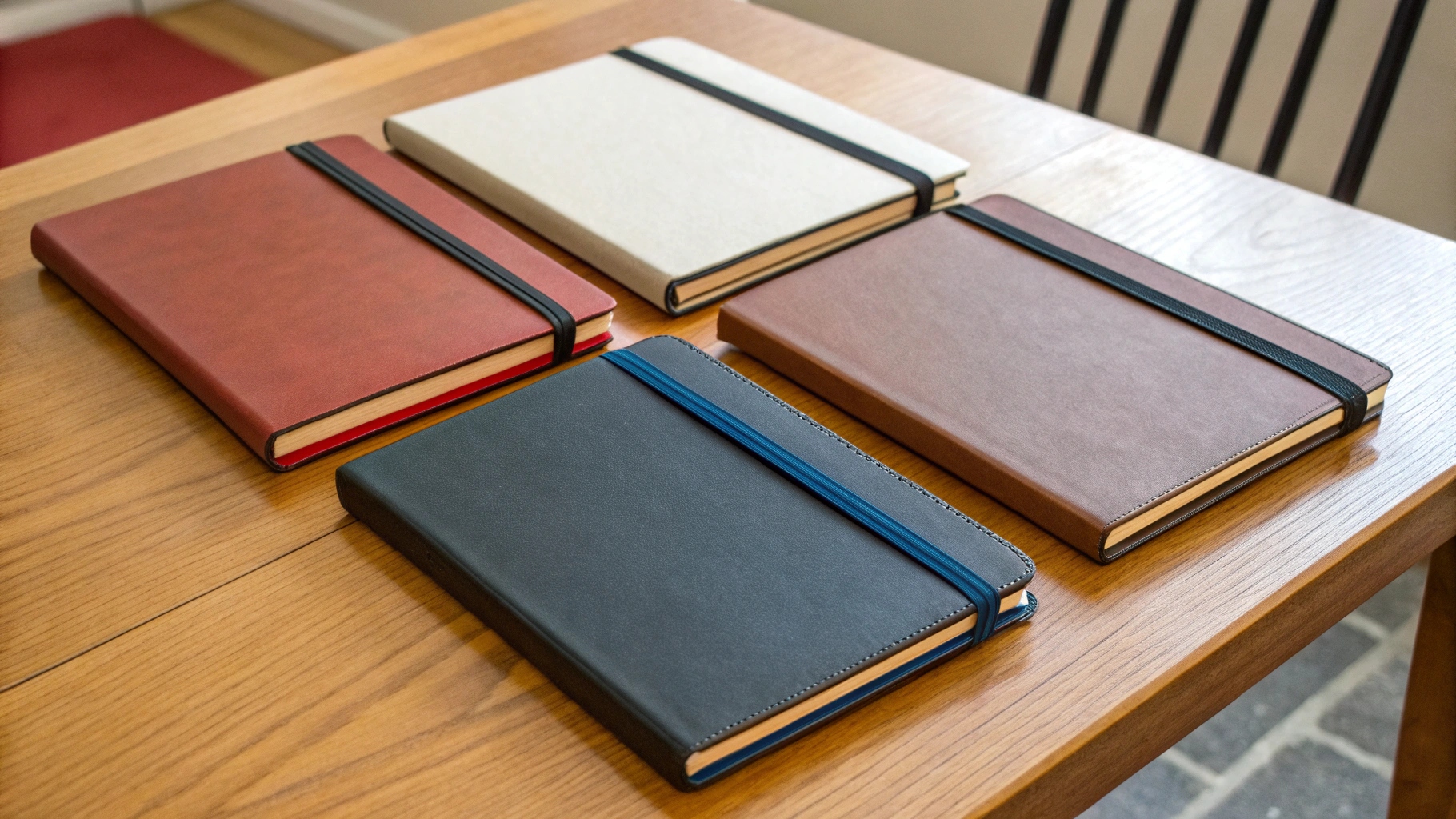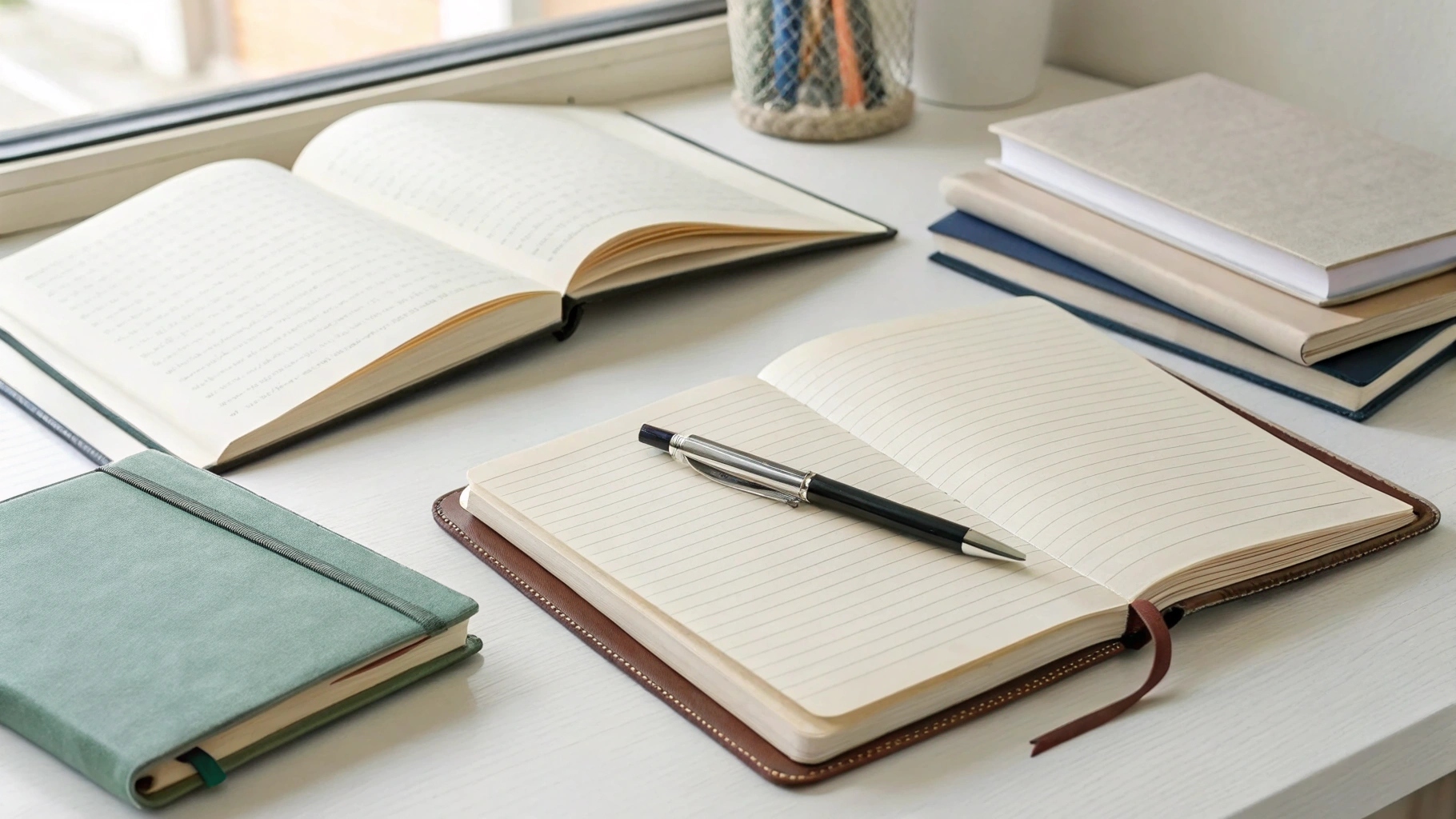The Best Notebooks and Notepads?
Overwhelmed by the choice of notebooks? Worried you'll pick one with flimsy paper or awkward binding? Finding the right notebook makes capturing ideas a pleasure, not a chore.
The "best" notebook truly depends on your specific needs. Key factors include paper quality (thickness, smoothness, bleed-through resistance), binding style (spiral, stitched, lay-flat), size (pocket, A5, letter), and intended use (note-taking, journaling, sketching).
I've handled countless notebooks over the years, especially when sourcing options for corporate gifts. While personal preference plays a huge role, some universal qualities make certain notebooks stand out. People like Jacky, a Marketing Manager I know, look for items that feel substantial and useful – a good notebook checks those boxes. Let's break down what makes a notebook great for different situations and look at some popular choices.
Which notebook is best for note-taking?
Struggling to keep your meeting notes organized? Frustrated trying to find key information later? The right notebook structure can turn messy scribbles into useful records.
For structured note-taking, notebooks supporting methods like Cornell (with dedicated sections) or bullet journaling (dot grid) are excellent. Features like quality paper that prevents ink bleed, lay-flat binding, and pre-printed layouts are key.
The ideal notebook really depends on how you take notes. Are you capturing quick points, outlining detailed plans, or brainstorming visually? When selecting notebooks for clients, I always consider their potential use. A salesperson might need something different than a designer. Good paper is crucial – thin paper where ink bleeds through is frustrating and unprofessional. A binding that lets the notebook lie flat on a desk makes writing much easier during meetings.
Matching Features to Note-Taking Styles
Let's explore how different notebook features suit various methods:
- Cornell Method: Requires distinct areas on the page for main notes, cues/questions, and a summary. Notebooks specifically ruled for this exist, or you can draw lines in a standard lined notebook. Good structure is key.
- Outline Method: Works well in standard lined notebooks. Focus is on hierarchical structure (I, A, 1, a). Paper quality matters for readability.
- Bullet Journaling (BuJo): Dot grid paper is heavily preferred. It offers guidance for lists and layouts without the restriction of lines. Flexibility is the main benefit.
- Freeform/Mind Mapping: Blank pages are best. Allows for diagrams, sketches, and non-linear thinking. Paper thickness is important if using markers.
Here’s a quick comparison:
| Note-Taking Style | Recommended Ruling | Key Feature | Ideal Size (Common) |
|---|---|---|---|
| Cornell | Lined (or custom) | Pre-defined sections | A4 / Letter |
| Outline | Lined | Clear line spacing | A5 / A4 |
| Bullet Journaling | Dot Grid | Flexibility | A5 |
| Freeform/Sketching | Blank | Paper thickness | Various |
Portability (A5 is popular) versus writing space (A4/Letter) is another factor. Durability matters if it's carried daily – which is why sturdy covers like PU leather are a great choice for branded notebooks.
What is so special about Moleskine notebooks?
You see Moleskine notebooks1 everywhere, often with a premium price. Is the hype justified, or are you just paying for the name? Let's look at what makes them stand out.
Moleskine's special status stems from clever heritage marketing linking them to famous creatives, iconic design features (rounded corners, elastic band, ribbon), consistent branding, and perceived quality creating a strong lifestyle appeal.

Moleskine has done a brilliant job building its brand. They revived a classic notebook style reportedly used by artists like Picasso and Hemingway (though the modern company started much later). This association creates an aspirational quality. Their design is instantly recognizable: the simple cover, the elastic closure to keep it neat, the ribbon bookmark, and the expandable pocket in the back. It feels like a complete, well-thought-out object. From a branding perspective, like the custom PU notebooks I often recommend, Moleskine projects an image of creativity and professionalism.
Breaking Down the Moleskine Appeal
What contributes to their reputation?
- Heritage Narrative: The story connecting the notebook style to historical figures is powerful marketing, even if today's Moleskine company is relatively young (founded 1997).
- Iconic Design: The combination of features is distinctive and practical. Rounded corners resist wear, the elastic keeps pages secure, the bookmark finds your place, and the pocket holds loose notes.
- Brand Consistency: Whether you buy one in London or Tokyo, a Moleskine looks and feels familiar, reinforcing brand identity.
- Wide Range: They offer various sizes, rulings (lined, squared, dotted, plain), and special editions, catering to diverse tastes.
- Perceived Quality: While generally well-made, the paper quality2 is sometimes debated, especially by fountain pen users who might experience bleed-through or ghosting. It's often seen as good, but perhaps not best-in-class for heavy ink users.
Here's a summary of pros and cons:
| Feature | Pro | Con |
|---|---|---|
| Branding/Story | Strong aspirational appeal | Marketing may inflate perceived value |
| Design | Iconic, practical features | Copied by many other brands now |
| Availability/Range | Widely available, many options | Can be overwhelming |
| Perceived Quality | Consistent build, feels good | Paper not always ideal for all pens/inks |
| Price | Reflects brand value | Higher than many comparable notebooks |
Ultimately, Moleskine offers a reliable, stylish notebook with strong brand recognition, making it a popular (though premium) choice for personal use and gifting.
Are notebooks still popular?
In our hyper-digital age, does anyone still use paper notebooks? With notes apps on every phone and computer, is buying physical notebooks becoming obsolete? Surprisingly, they remain highly relevant.
Yes, notebooks are still incredibly popular. Many people find writing by hand enhances memory, reduces digital distractions, and aids creative thinking. The tangible nature offers a welcome break from screens.

It might seem counterintuitive, but the rise of digital technology hasn't killed the notebook. In fact, for many people, it has highlighted the unique benefits of writing on paper. I see this constantly in the corporate gifting world – items like the custom PU notebooks we produce remain in high demand. Clients like Jacky know their customers and employees often appreciate a physical tool for thought and organization, even if they also use digital tools extensively. The act of writing itself seems to hold a special value.
Why Paper Persists
The enduring appeal of notebooks comes down to several factors:
- Cognitive Benefits: Studies suggest writing notes by hand improves understanding and memory retention compared to typing. The slower pace forces information processing.
- Reduced Distraction: A notebook doesn't offer notifications or the temptation to browse the internet. It encourages focus on the task at hand.
- Tangibility & Permanence: Physical notes feel more concrete. There's a satisfaction in filling pages and having a physical record.
- Flexibility: Paper allows for easy sketching, diagramming, and non-linear layouts that some digital apps struggle with.
- Digital Detox: Many people actively seek analog tools like notebooks as a break from constant screen time.
- Gifting Appeal: Notebooks are seen as thoughtful, useful gifts that are easy to personalize or brand.
Let's compare analog vs. digital notes briefly:
| Feature | Analog Notebooks | Digital Notes Apps |
|---|---|---|
| Focus | High (fewer distractions) | Lower (notifications, web) |
| Memory Retention | Often Better | Can be weaker |
| Searchability | Manual | Instant |
| Sharing/Backup | Manual (scan/photo) | Easy |
| Flexibility | High (layout, sketching) | Varies by app |
| Tactile Experience | Satisfying | None |
Notebooks aren't going away; they fulfill needs that digital tools don't, making them a continuously popular choice for personal use and effective branding.
Conclusion
The best notebook enhances your thinking and captures ideas effectively. Whether it's the structure for note-taking, the brand appeal of a Moleskine, or the simple act of writing, notebooks remain popular and valuable tools.





